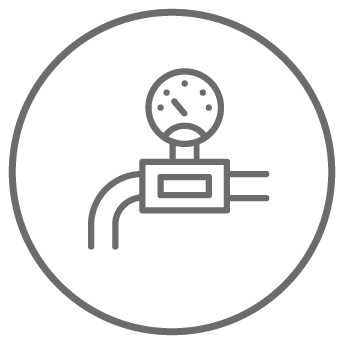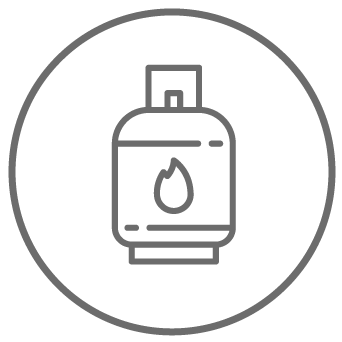Domestic refrigeration - Origins, history and gases used

Domestic refrigeration has a long history and before the invention of refrigerators, ice was stored in iceboxes. 1913 the Domelre company produced the first refrigerator and today this household appliance is one of the most common as it allows food to be preserved for a long time.
Realized for the first time in Chicago in 1913, the first electric refrigerator was called Domelre and in 1916 was followed by Frigidaire. Only in the second half of the twentieth century the refrigerator enters in the houses of Italians and within 50 years the price becomes accessible to all.
1944 the Swiss company Sibir invented the first absorption refrigerator, which works without a compressor using gas, oil and electricity. In the 60's, technological progress led refrigerator manufacturers to improve the thermal insulation of the devices with less energy consumption. This is an important evolution as the refrigerator is the only household appliance to be in operation 24 hours a day.
In 1969 the first refrigerator with a -18°C compartment was created at the same time as the spread of frozen foods and in 1971 the minus 32°C freezer was created and internal lighting was added.
Controlled consumption refrigerator-freezers
In the 80, combined fridge-freezers were born and it was a time when Europe had to recover from two successive oil crises. For this reason, efforts were made to avoid wasting energy and even the refrigerator was reviewed, as it represents 30% of a family's electricity consumption in the bill.
Thus, in 1974, energy-labelling systems were born and, since 1995, consumers are informed about the energy consumption of refrigerators in order to lead them to buy more efficient products that reduce CO2 emissions into the atmosphere. In 1995 the scale from A to G was introduced and the lowest energy consumption was the distinguishing factor among the refrigerators on the market. Thanks to this system, the energy consumption of refrigerators falls by one third between 1996 and 2000. A new step was taken in 2004 with the implementation of the A+ and A++ energy classes.
Natural refrigerant gases for domestic and commercial refrigeration
Natural refrigerant gases offered by Settala Gas are different and are divided into categories suited to particular needs. Among these are:
- Refrigerant gas R600A or pure isobutene, used for domestic refrigerators and freezers and also suitable for LNG plants and power plants
- Refrigerant gas R290 or pure propane, used for air conditioning and commercial freezers and refrigerators, in ice machines, vending machines, and cascade refrigeration in supermarkets. It is the best environmentally friendly alternative to environmentally harmful R134a
- Refrigerant gas R1270 or propylene
- Refrigerant gas R600 or pure n-butane, used alone or as a component of blends
Since the Kyoto Protocol banned R134 from domestic refrigerators Settala Gas has been the market leader in the production and supply of R600a, becoming a key player in the transition and a partner of 90% of the major brands of European refrigerator manufacturers. Think of WHIRLPOOL, BEKO, BSH, MIELE, and LIEHBERR. The growth of the company did not stop here and today Settala Gas is also looking at the emerging Extra CEE markets.
Contact us for more information!




